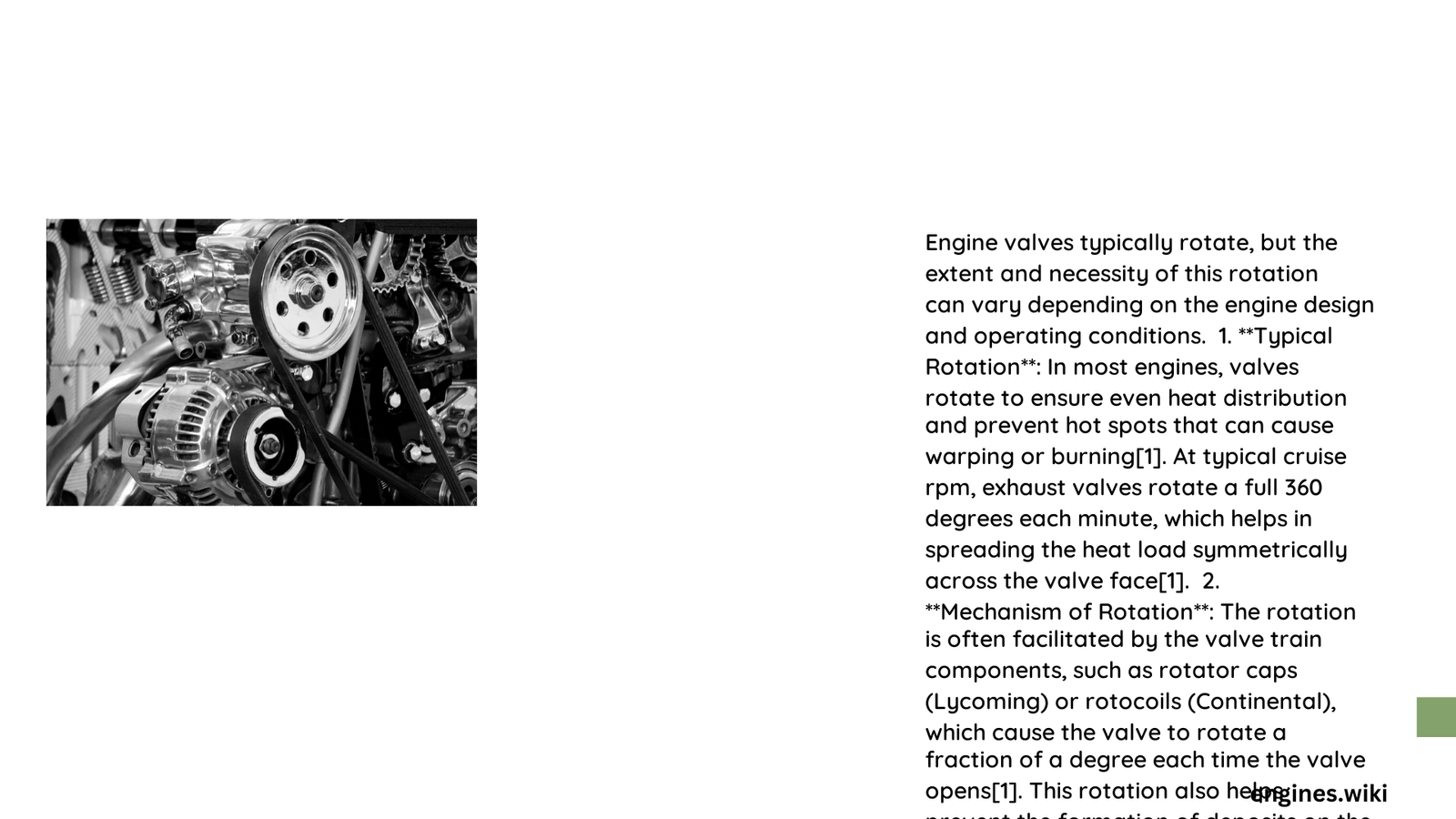Engine valves are critical components in internal combustion engines that perform a precise linear motion, not a rotational one. Contrary to common misconception, these valves move up and down within their guides, controlled by the camshaft’s intricate mechanism, ensuring optimal engine performance and efficiency.
What Actually Happens with Engine Valves?
Do Engine Valves Rotate in Reality?
No, engine valves do not rotate. Instead, they perform a vertical translational movement, opening and closing in a linear fashion. This movement is precisely controlled by the camshaft’s design and synchronized with the engine’s crankshaft.
Valve Movement Mechanism
| Component | Function | Movement Type |
|---|---|---|
| Camshaft | Controls valve operation | Rotational |
| Valve | Opens/closes combustion chamber | Linear (Up/Down) |
| Valve Guide | Provides structural support | Restricts rotation |
How Do Valves Move Without Rotation?
The valve movement is orchestrated through a complex system:
- Camshaft Lobes: Push against lifters
- Lifters: Transfer motion to pushrods
- Pushrods: Transmit force to rocker arms
- Rocker Arms: Push valve stem vertically
- Valve: Opens and closes in linear motion
Why Don’t Valves Rotate?
Several engineering principles prevent valve rotation:
- Precise Sealing: Valves must maintain a perfect seal against the valve seat
- Structural Integrity: Rotation would cause uneven wear and potential failure
- Mechanical Efficiency: Linear motion ensures consistent performance
What Happens During Valve Operation?
When the camshaft rotates, its lobes push the valve stem upward, opening the valve. The valve spring then returns the valve to its closed position. This process occurs hundreds of times per minute during engine operation.
Impact on Engine Performance
The linear valve movement significantly influences:
- Combustion Efficiency
- Fuel Consumption
- Power Output
- Emissions Control
Technical Considerations
Valve Material and Design
- Intake Valves: Typically made of nickel-chromium alloys
- Exhaust Valves: Constructed from high-speed steel
- Valve Angle: Precisely ground (30-45 degrees)
Common Misconceptions
| Myth | Reality |
|---|---|
| Valves Rotate | Valves Move Linearly |
| Rotation Improves Performance | Precise Linear Movement Matters |
Advanced Valve Technologies
Modern engines explore innovative valve designs:
- Variable Valve Timing
- Electromagnetic Valve Actuators
- Multi-Valve Configurations
Conclusion

Engine valves do not rotate but perform a critical linear movement that ensures optimal engine performance. Understanding this mechanism reveals the intricate engineering behind modern internal combustion engines.
